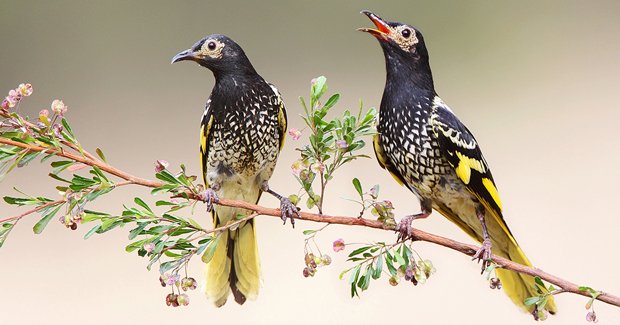Regent honeyeater population gets a boost

AROUND 40 REGENT HONEYEATERS bred in captivity at Taronga Zoo, Sydney, will be released into the wild today in a boon for the species.
The native regent honeyeater (Anthochaera phrygia) is nationally endangered. The total known population is estimated at between 800 and 2000, and is thought to be limited to patches of Victoria and New South Wales.
The species was once found in great numbers throughout the box ironbark forests of NSW and Victoria. These eucalypt forests have been subjected to intense forestry since European settlement.
Efforts to breed regent honeyeaters in captivity and release them to boost wild populations have been in effect since 1995.
Native birds bred in captivity
Glen Johnson, a biodiversity officer at the Department of Environment and Primary Industries (DEPI), says the birds will provide another boost to the regent honeyeater population.
“We’ll be attaching radio transmitters to about 25 of the birds that are being released, and all are fitted with unique colour leg band combinations to assist individual identification,” Glen says.
Previous releases of captive-bred regent honeyeaters have revealed that the birds successfully breed with and recruit new fledglings into the wild population.
“Each time we find another captive-bred bird in the wild we learn a bit more about how they are adapting and behaving,” says Glen.
RELATED STORIES

